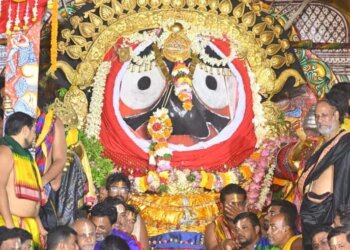Introduction
India is a land of diverse cultures and religions, and it is this diversity that gives rise to a plethora of festivals and traditions celebrated throughout the year. Among the many religious festivals that grace the Indian calendar, one of the most significant and awe-inspiring is the Bahuda Yatra, celebrated in the sacred city of Puri, Odisha. This festival, often referred to as the “Return Journey of Lord Jagannath,” holds a special place in the hearts of millions of devotees. In this blog, we will delve into the essence and traditions of Bahuda Yatra, gaining a deeper understanding of its significance in the spiritual and cultural landscape of India.
The Legend of Lord Jagannath
Before we dive into the Bahuda Yatra, let’s familiarize ourselves with the legend of Lord Jagannath. The story of Lord Jagannath, Balabhadra, and Subhadra is an integral part of Hindu mythology. According to popular belief, Lord Jagannath is an incarnation of Lord Krishna, and his siblings, Balabhadra and Subhadra, are regarded as Lord Balarama and Devi Subhadra.
The Temple of Jagannath in Puri, Odisha, is one of the holiest pilgrimage sites for Hindus and is often referred to as the “Yuga-Dharma.” This temple is famous for its unique wooden deities, which are renewed every 12 to 19 years during the Nabakalebara ritual. The deities are carved from a sacred neem tree and represent Lord Jagannath, Balabhadra, and Subhadra.
The Journey of Lord Jagannath
The Bahuda Yatra is the second-most crucial festival in Puri after the Rath Yatra. ‘Bahuda’ means ‘return’ or ‘coming back,’ and the festival marks the return journey of Lord Jagannath, Balabhadra, and Subhadra from their temporary abode, the Gundicha Temple, to the Jagannath Temple in Puri. This event takes place on the ninth day of the bright half of the Ashadha month (June or July), just a few days after the Rath Yatra.
Traditions and Celebrations
- The Preparations: The preparations for Bahuda Yatra begin days in advance. Devotees clean and decorate the Gundicha Temple to welcome Lord Jagannath and his siblings. The deities are adorned with new attire, jewelry, and flowers.
- The Procession: On the day of Bahuda Yatra, the deities are taken out of the Gundicha Temple in beautifully decorated chariots. The journey back to the Jagannath Temple is approximately 3 kilometers long and is a spectacle in itself. Thousands of devotees gather to witness this grand procession.
- Devotion and Joy: Devotees, young and old, line the streets to catch a glimpse of Lord Jagannath, Balabhadra, and Subhadra. It is believed that just seeing the deities during this procession can cleanse one’s soul and bestow blessings.
- Offerings and Bhajans: Throughout the journey, devotees offer fruits, sweets, and prayers to the deities. The air is filled with the sounds of bhajans (devotional songs), and the atmosphere is charged with spirituality.
- Return to the Temple: After reaching the Jagannath Temple, Lord Jagannath, Balabhadra, and Subhadra are ceremoniously taken back inside amidst a sea of devotees. This marks the conclusion of the Bahuda Yatra.
Significance
The Bahuda Yatra holds profound spiritual significance for devotees. It symbolizes the return of Lord Jagannath to his abode, signifying the completion of his annual journey. It also emphasizes the cyclical nature of life and the eternal bond between the divine and the mortal.
Conclusion
The Bahuda Yatra in Puri is not just a festival; it’s a vibrant tapestry of faith, devotion, and cultural heritage. It reminds us of the enduring connection between the divine and the human, as well as the rich tapestry of traditions that make India a diverse and spiritually profound nation. Witnessing the grandeur and devotion associated with Bahuda Yatra is an experience that leaves an indelible mark on the hearts of those who are fortunate enough to be a part of it. It is a celebration of faith, a testament to the enduring legacy of Lord Jagannath, and a reminder of the boundless devotion of the people of Puri.







 Finance
Finance







